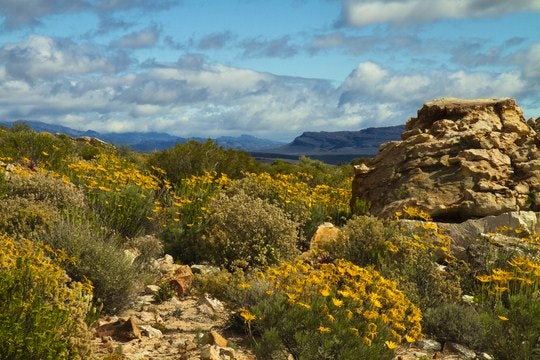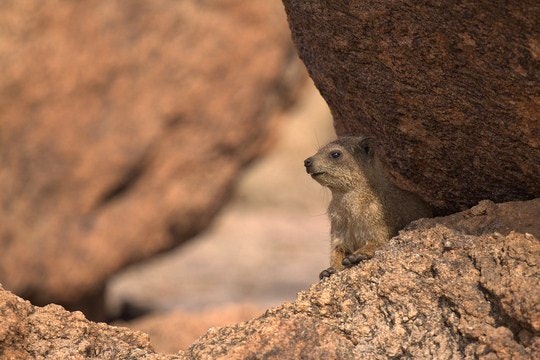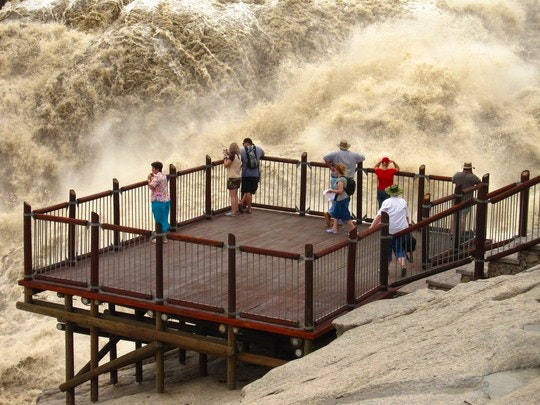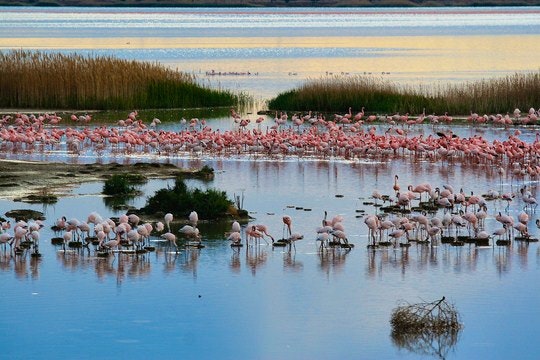Many people avoid heading to the Northern Cape during holidays – it doesn’t have the glamorous appeal that Gauteng does, the lure of warm waters and wildlife that KwaZulu-Natal boasts, or the variety of entertainment that the Western Cape lauds.
Despite the lack of pizazz, it has a charm that envelopes its visitors. From the tranquillity broken only by insects at night, to the dramatically contrasting daytime scenery, you’ll will discover a variety of unique and eerie spots.
1. Springbok – incredible flora
Make Springbok your base and explore the natural beauty that surrounds it; from viewing the mesmerizing kokerboom, commonly called quiver trees, which attract birdlife, to driving through the Namaqua National Park.
In spring, you’ll have the movie-esque experience of wandering through thick flower fields with cheerful Namaqua daisies bobbing in the breeze. Indigenous flora such as succulents and aloes take centre stage during the rest of the year. The numerous flora species have a delicate appearance, making it that much more remarkable that they survive the harsh temperatures.
Stay at: Daisy Country Lodge just outside of Springbok is an owner-run, pet-friendly establishment that offers weary travellers cosy cottages and country hospitality.
2. Namakwa – the world’s only arid hotspot
Once you’ve had your fill of Springbok, head north-east into the Namakwa to Pofadder, and keep your eye out for the unique halfmen tree’s, officially known as Pachypodium namaquanum. These sparsely leafed trees have a very humanoid appearance, and legend has it that they are ancient Khoi ancestors who fled their homeland and were transformed by a kindly god into trees, so they could gaze at the land of their origin for all eternity.
While you continue to drive through the world’s only arid hotspot, keep your eyes out for birds, mammals, amphibians, reptiles, and insects, of which 40% are indigenous to this area only and have not been found anywhere else in the world.
Stay at: Lekkerbly Self-Catering, a basic but cosy self-catering flat perfect for a one-night stopover. Please bring your own food, drinks, and towels, as none are supplied on-site.
3. Augrubies Falls National Park – the waterfall
After your overnight in Pofadder, head to the incredible Augrubies Falls National Park, where you can enjoy numerous hiking trails before heading to the main attraction, the waterfall called Aukoerebis by the Khoi, which means the “great noise”. Here, you can view thousands of tons of water cascading into the Orange River and take a walk atop the gorge to several viewing areas such as Moon Rock, a domed rock that gives visitors a great overview of the surrounding landscape.
Keep your eye out for quiver trees, black eagles, and numerous cute rock hyraxes which are commonly referred to as dassies. Consider visiting the nearby Riemvasmaak Hot Springs to soak your weary body before returning to your accommodation for the night.
Stay at: The Falls Guest House, a luxurious place to overnight, located not far from the famed Augrubies Falls National park. You will stay on a B&B basis, though there are basic self-catering facilities in the rooms.
4. Kuruman – the natural fountain
Take a leisurely drive to Kuruman which is four hours from Augrubies and three hours from Upington. Here, you can view the incredible Kuraman’s Eye (also called Kuruman’s Oog in Afrikaans). This natural spring supplies water to the Kuruman region, feeds into the Kuruman River, and overflows into two 7km long canals daily. It is said to be the largest fountain in the entire Southern hemisphere, pumping between 20 – 30 thousand litres out per day.
Stay at: Kuru-Kuru Guest House, a cosy home that provides warm Karoo hospitality. The rooms are spacious and fully-equipped for a peaceful night’s sleep.
5. Kimberley – the Big Hole
After your stay in Kuraman, take a three and a half hour drive to Kimberley. A half-hour before you reach Kimberley, stop outside of Windsorton town to enjoy the inexplicable lush landscape of the Vaalharts Valley, which is set to join the upcoming Agri-Tourism Route.
Have an early brunch or a quick leg stretch before continuing on your journey to view the famed Big Hole, which is technically only the second biggest man-made hole in South Africa (Jaggersfontein has the largest). After marvelling at the man-carved walls and dark turquoise waters that have filled it over time, head to the historic town and visit some of the available museums.
Stay at: Carrington Lodge, an accommodation within the suburbs, surrounded by a lush garden with a pool, and comfortable rooms with plenty of small touches that leave guests with a great impression.
Let us know which route you took on your Northern Cape tour and what attractions stayed in your mind long after you’d left.
Main image courtesy of Sara&Joachim (Flickr)









